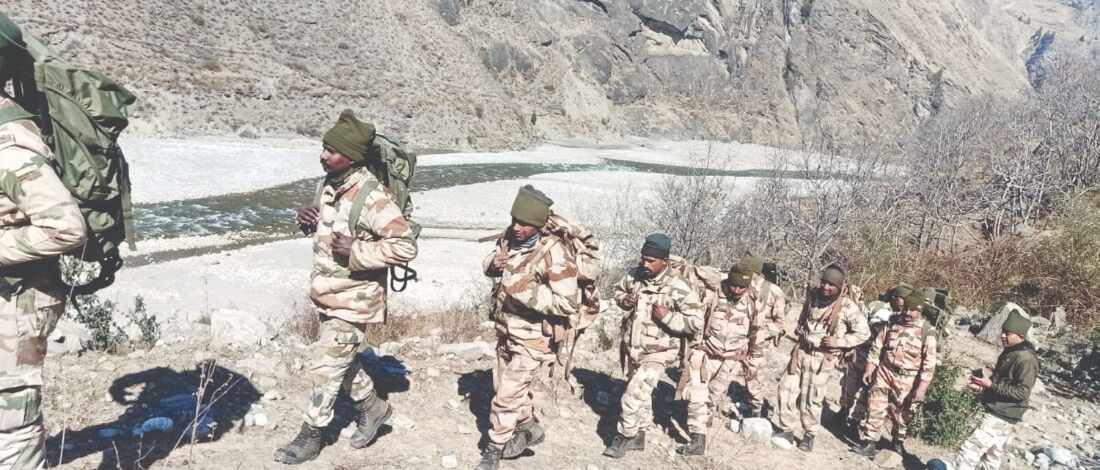Rescue teams widen hole in Tapovan tunnel to locate trapped men

Joshimath: A temporary lake formed at river Rishi Ganga has started discharging water, reducing the risk of another flash flood in the region, while rescuers on Saturday began boring a wider and deeper hole into the tunnel at the flood-ravaged Tapovan-Vishnugad hydel project in an attempt to reach the over 30 people trapped inside for nearly a week.
The Silt Flushing Tunnel (SFT) was punctured on Friday night itself by drilling a 75mm-diameter hole into it but now it is being widened to 300 mm so that a camera and a water flushing pipe could be inserted into the tunnel where the trapped are possibly located, General Manager of the NTPC project R P Ahirwal said.
The hole will have a depth of 12 metres, he said, adding muck removal from the intake Adit tunnel, below which the SFT is located, has been done up to 136 metres. At a coordination meeting of multiple agencies engaged in rescue operations, Ahirwal said the conditions inside the SFT tunnel might be known in 10-12 hours.
Rescuers said they were still hopeful of finding survivors, notwithstanding the numerous challenges like the muck and the water from Dhauli Ganga constantly flowing into the tunnels. The river had deviated from its path after the flash floods that have left 38 people dead and 166 missing.
The State Emergency Operation Centre here said scientists of the Indian Institute of Remote Sensing during an aerial survey of the Rishi Ganga found that the glacial lake formed due to the avalanche over it has begun to release water, which reduces chances of it breaching or causing a fresh flash flood during the rescue operations.
The lake is at the confluence of Raunthi Gad and Rishi Ganga.
According to Central Water Commission (CWC) chairman Saumitra Haldar, it is 400 metres in length, 25 metres wide and 60 metres deep.
The CWC is examining possibilities of what can be done if the water rises to a "critical" level. It is conducting simulation studies and also examining the possibility of carrying out a controlled blast to drain out the water.
"We are assessing what could be the impact if the water level rises following rains and snowfall as predicted by the IMD. We are also studying what volume of water would be released if the lake bursts and how much time it would take to reach downstream," Haldar said.
Ahirwal said making an approach road to the desilting basin from downstream and diverting the course of the Dhauli Ganga river from left to right are also in progress.
P K Tiwari, Commandant of the National Disaster Response Force, said based on their experience, they are optimistic about saving lives and mentioned the possible presence of air ducts and gaps in the tunnel.
He said the situation had seemed irretrievable initially, but since then a lot of progress has been made and they will continue their efforts to reach the trapped people.



